Lowa Mountain Expert GTX
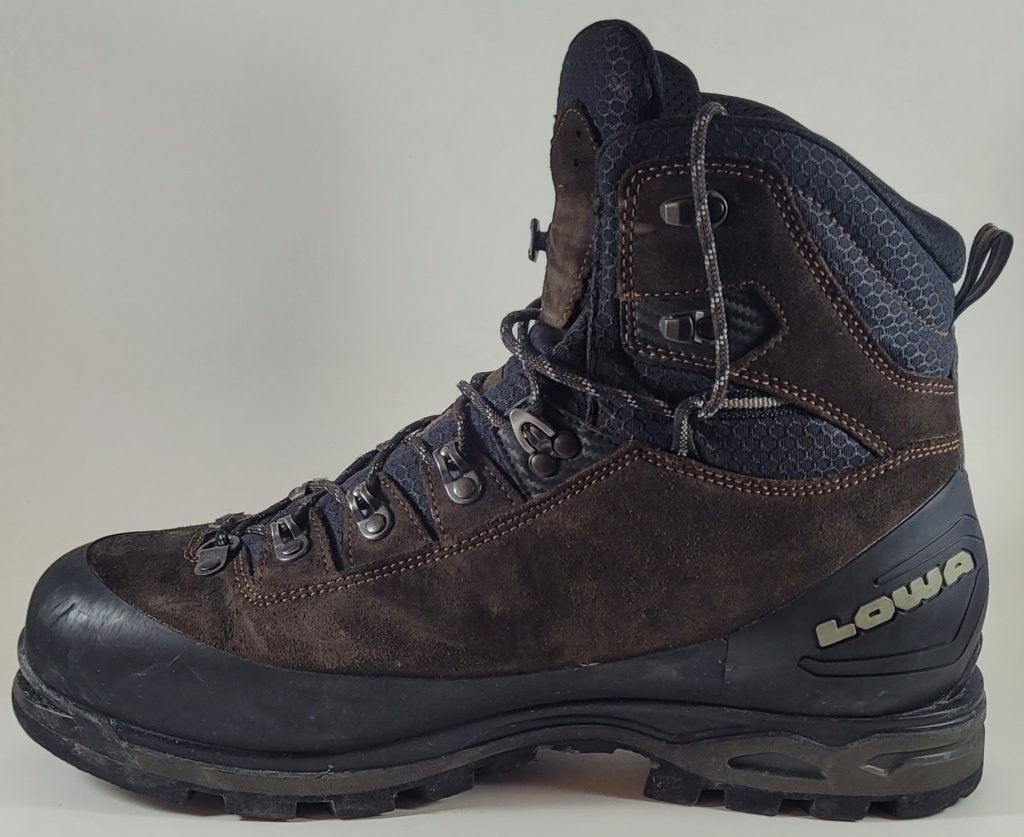
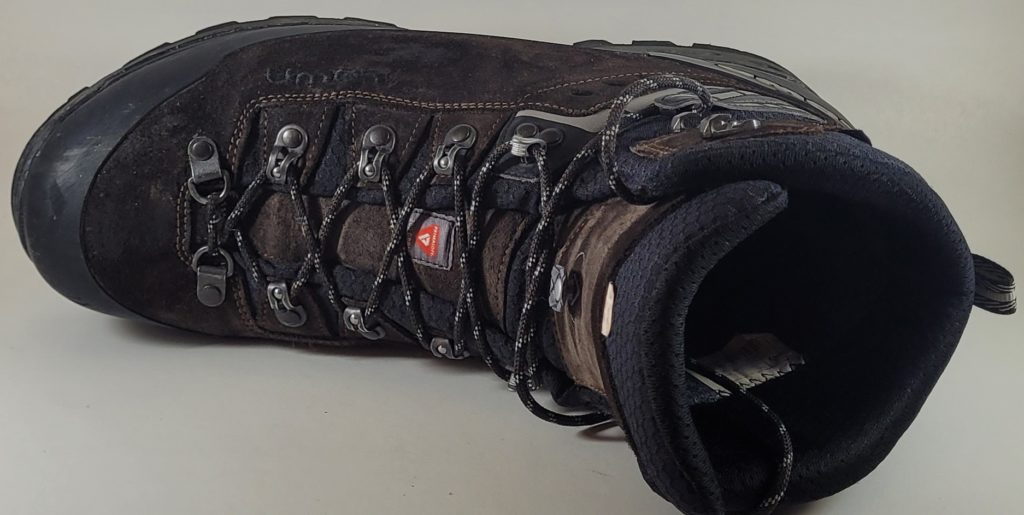
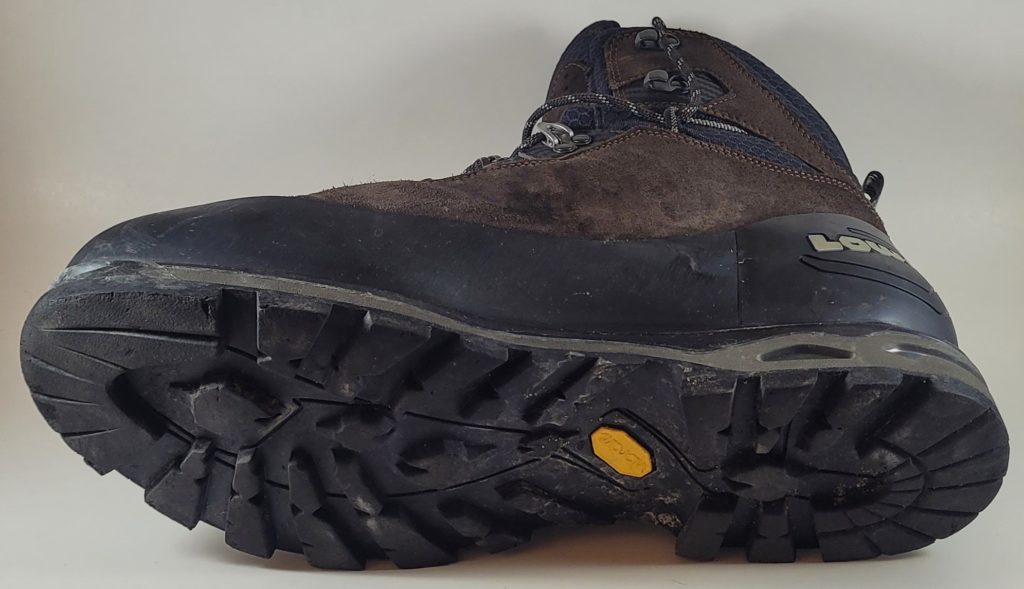
I’ll link to my treatise on what I look for in a hiking boot here, for a much deeper dive.
These boots have been discontinued but look like they’ve been replaced by the Lowa Alpine Expert II GTX. Looks like a very similar boot with a few minor upgrades to the lacing system.
These are another world altogether from typical hiking footwear but are an example of a full-shank (or similar) mountaineering-style boot. These have more rocker than some of this ilk but they’re still incredibly stiff, almost like walking in snowboard boots. They’re insulated, have a full rand and the outsole looks different than most. At this level of boot you’ll notice that the outsole is more squared off, has more plastic bits and seems narrow. That’s because you’re entering the semi & full automatic crampon world. Instead of a plastic front and rear bail you strap on to your feet these have cutouts on the front and/or rear onto which you place fancier crampons. Think ski bindings rather than snowboard bindings, only less fancy and technical. I haven’t put a lot of miles on these as they’re best for rugged and cold terrain which only comes around a few times per year. The primary quibbles on these are the slightly narrow toe box which I can feel on my big toe after many miles (similar to wearing steel toed boots if you’re familiar) and the difficult lacing system.
The narrow toe box is subjective and really not an issue, although I did find that due to that, as well as the insulation (lightly insulated compared to competitors) I was uncomfortable wearing my super thick winter mountaineering style wool socks. Too much sock, too much heat. These are actually more comfortable in my regular wool hiking socks.
Eyelets for days:
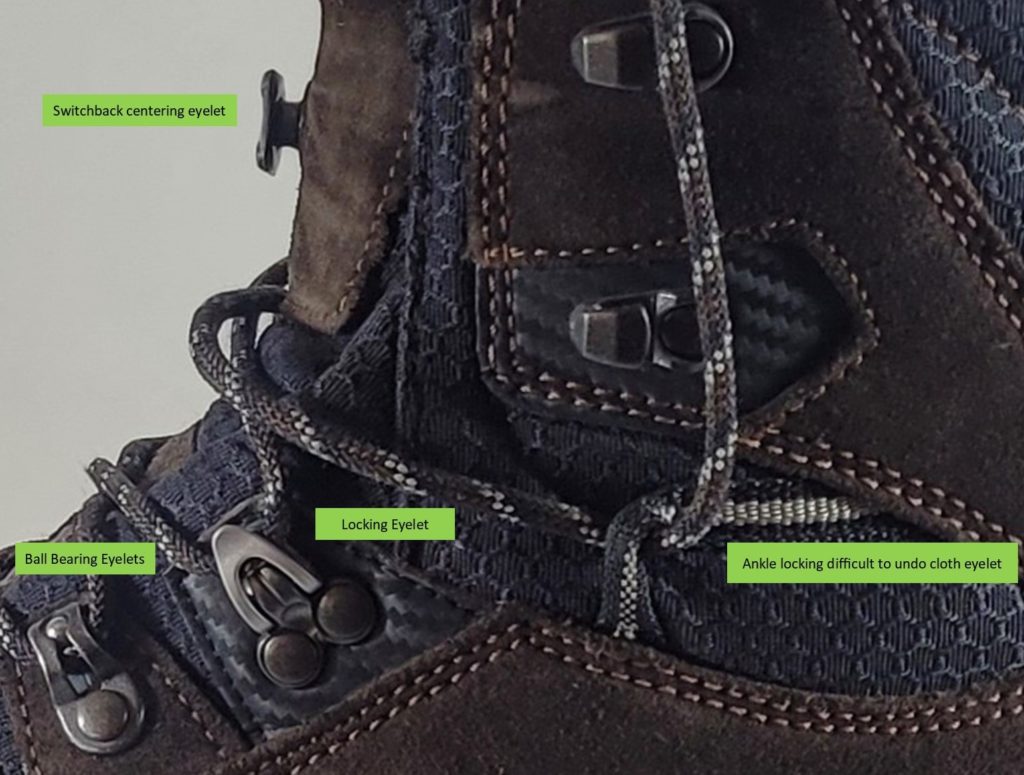
The Ball Bearing eyelets are pretty cool, not sure if they help that much but they don’t hinder – once the locking eyelet is locked in. I’d imagine this allows the laces to flex a bit when walking, not sure but it’s fancy so that’s something.
The locking eyelet is hinged and when tightened folds down and compresses the lace against the exposed nub. These simply snap open like a snowboard binding but tend to fold back over as you’re loosening the laces, effectively locking them back in place again.
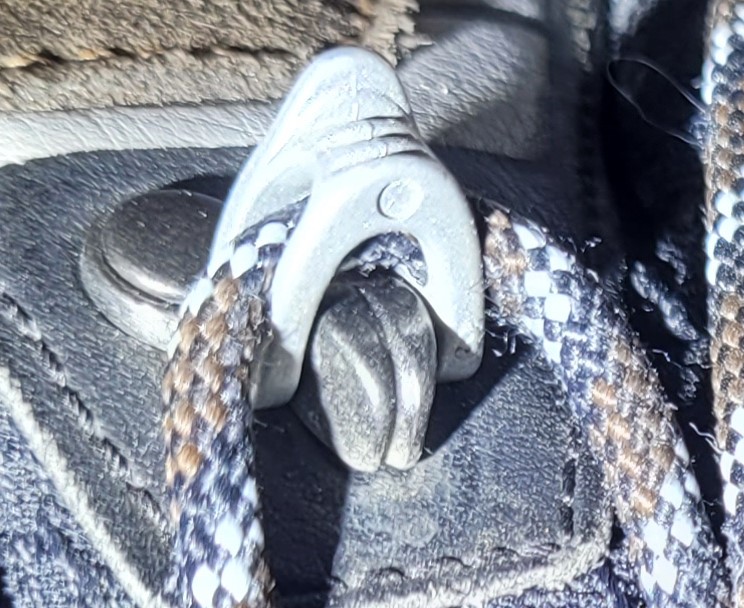
But that’s okay, because the cloth ankle loop has a lot of resistance and effectively locks the laces in place once tightened. It’s mostly an issue when taking the boots off because you can’t simply undo the knot and let the laces and therefore shoe relax. Instead you have to reach back and manually loosen them enough so you can then unlock the other laces with enough slack such that the rest of the boot loosens up. In the store it’s no big deal, but after 12 miles of slogging through snow and steep, loose slopes I get tired and these little extra things become annoying.
Lastly there’s what I’m calling the switchback centering eyelet, which reverses the direction of the laces and effectively centers everything nicely. Not sure if it’s really necessary but I do enjoy it.
One thing which struck me was how slippery these boots actually are on flat, parking lot ice. Because there’s no flex or curve to the sole at all it’s easy to walk in these like normal shoes, heel-to-toe. I found myself wearing my regular hiking boots in winter areas when just hanging around town, putting these on when the going got serious. But that’s really what they’re designed for, not mall crawling but crawling over the malls.
This is my first foray into this type of boot, purchased mostly because I wanted something specifically for the snow, designed for semi-automatic crampons due to a manual crampon trip-up I had once, with a stiff outsole and insulated design purpose-built for rugged back country hikes and light mountaineering. Cost was a limiting factor because boots like these will run $500. I made a well researched choice and found these on a huge sale at MidwayUSA so I’m happy with my decision but if I were to do it again I’d save up the $500, try on as many as I could and not worry about paying full retail. At some point price cannot be the driving decision maker and these are at that point, although these would be on the shortlist to consider.

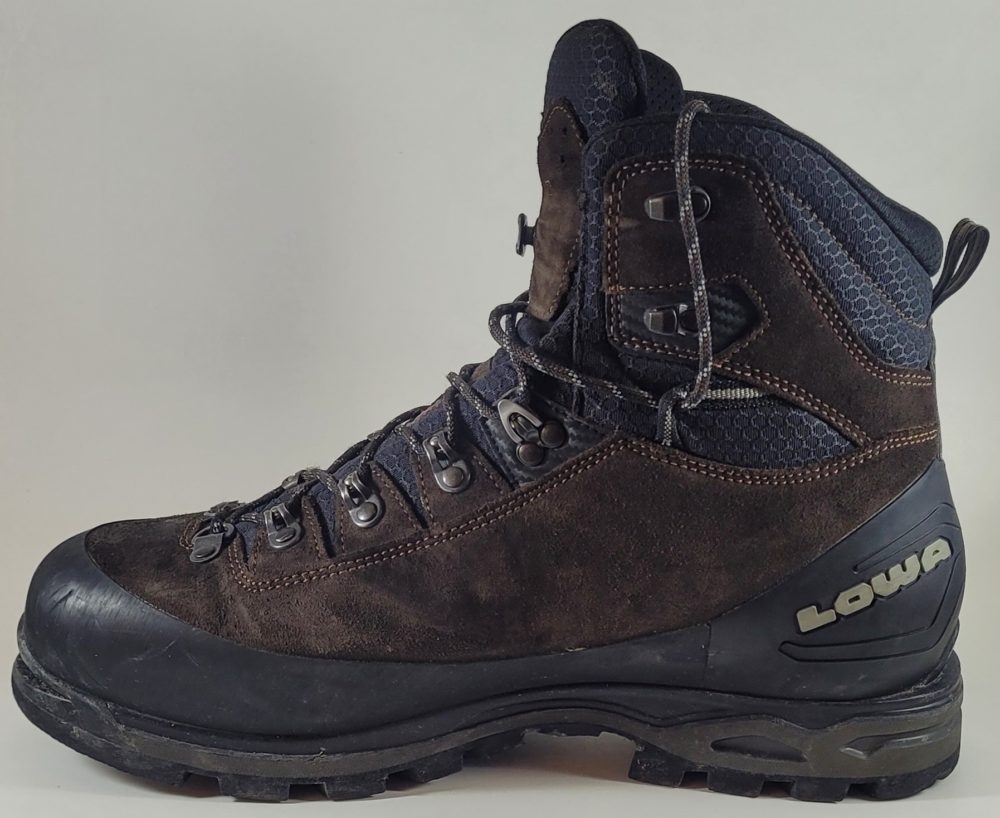




Comments are closed here.